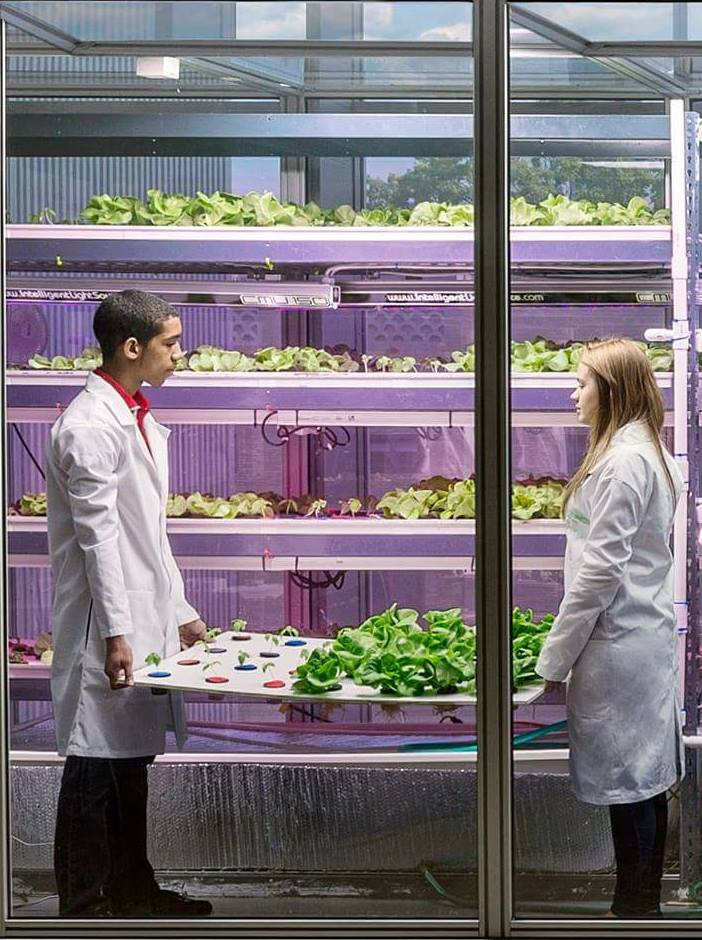Everywhere I go lately, people are throwing around the word “innovation” as if it means something, like “The government’s really into innovation right now” or even more vaguely “Innovation is the future”. But, really, innovation could refer to anything and everything. It’s been described as an “aerosol” word – one that you spray the air with, all your friends can smell it, and they are impressed and think it smells lovely, but no one can actually grab hold of it or pin it down. For me, innovation is more like a fart. Someone let it loose without consideration and they can’t put it back.
As a result, we need to think more about what innovation in agriculture means, so that we know it when we smell it. To start, we know what is not innovative anymore. For instance, synthetic pesticides and fertilisers were innovative in the 1960s, but we now know that they are bad for health and bad for the long-term health of the land. Also, large regions of the world didn’t benefit from the invention of synthetic pesticides and fertilizers. In fact, around one third of humanity has not been affected by modern agricultural science (IAASTD 2009). We also know that genetically modified seeds, instead of being the ‘saviour of the world’, are actually more of a mixed bag with studies showing an increase in pesticide use and mixed results for farmer income.
Hype around scientific or technological developments that are developed by private institutions or public-private partnerships is strong and seductive. Different technologies are presented as the solution to farming practices and the future of farming. In doing so, “innovation” has tended to exclude indigenous, local and traditional knowledge. Not all innovations come from white coats and labs, and thinking that they do is degrading to farmers and has clear connections with racist, colonial beliefs about indigenous and local farming. The greatest developments in agricultural history, such as the development of the varieties of crops that we use today, were developed on the farm by farmers. In fact, developing new methods and varieties within the eco-systems that they will be used in is critically important for innovation, environmental sustainability and food security.
In 2009, fifty-eight countries approved a report reviewing agricultural research and development, involving the work of hundreds of experts and peer-reviewed by 400 experts from all parts of the world, with Australia, Canada and the United States having reservations. The report noted that ‘Small-scale diversified farming is responsible for the lion’s share of agriculture globally’ and that most research is funded by private actors and so ‘tends to be concentrated in areas of commercial interest…rather than in applications deeply informed by knowledge of farming practice and ecological contexts’. In other words, the research conducted for agriculture tends to be for the benefit of commercial interests and not for addressing the actual needs of farming communities, the particular farming sites, and consumers.
Calestous Juma writes about resistance to “innovation”. He states: ‘In searching for solutions we should return to the core concerns about loss and technological exclusion as a major driver of resistance. Take the case of transgenic crops in Africa. Much of the opposition comes from a deep feeling of being excluded from the technology. This is then reflected in rejection of products that are developed without local input.’ However, even if the products were developed with local in-put, broader inequities in the current agriculture and innovation space mean that these farmers may not be able to afford access. Arguably, companies need to be able to exclude people from using their technologies in order to sell them. Exclusion, in other words, is a critical part of their business model. Farmers that co-create with companies are not necessarily going to have on-going access to the technology or knowledge developed, and farmers who did not participate will have to buy access. There are some areas where private innovation in agriculture is not suited to the public goods that come from agriculture. And technological developments, even if informed by farmers, do not address the power imbalances in food systems including ‘the knowledge monopoly held by professional scientists and powerful institutions’.
Instead, we need innovations that respect traditional and local approaches, are co-created by farmers and for farmers and consumers, and which are built on a range of knowledges and experiences. This kind of innovation can be as simple as posting a question on a social media site and receiving suggestions, questions and comments from others or as complex as a group of scientists from the public sector working with farmers to co-create new varieties or practices.
Social enterprises that re-design value chains are an innovation that has the potential to improve the income of farmers, the meaningfulness of their work. For instance, regional food hubs work with small and medium sized producers to build capacity and enter new markets. Scaling such models up will require innovative approaches to business. Another key area for innovation is in farming practices- not technology that you need to spend lots of money on. For example, “za pits” or “planting pits” improve soil fertility on sandy soils- this practice involves digging basins (or holes) on barren soil, and putting some manure in each basin before planting. When the rain comes, they catch four or five times the amount of rain and allow soil fertility to come back. This kind of practice does not make profits for fertiliser companies, but it does help farmers, and it can be scaled up and adapted by communities.

